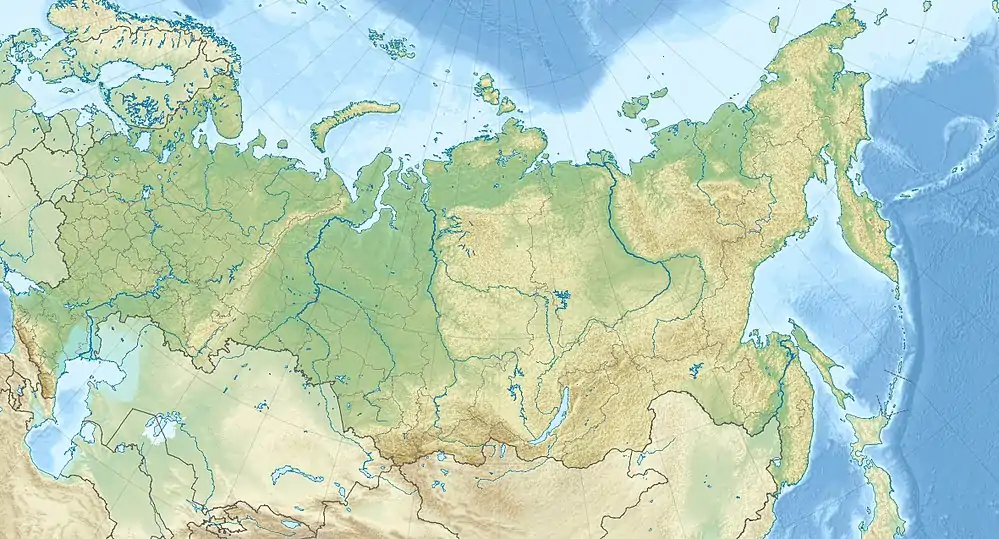Kakanaut Formation
The Kakanaut Formation is a geological formation in Siberia, whose strata date back to the Late Cretaceous (Maastrichtian). Dinosaur remains are among the fossils that have been recovered from the formation.[1][2] The youngest remains of Bennettitales in the northern hemisphere, Pterophyllum terechoviae are known from the formation.[3]
| Kakanaut Formation Stratigraphic range: Maastrichtian ~70–66 Ma | |
|---|---|
| Type | Geological formation |
| Underlies | Danian marine deposits |
| Overlies | Maastrichtian marine deposits |
| Thickness | 1,000 m (3,300 ft) |
| Lithology | |
| Primary | Sandstone |
| Other | Volcaniclastic |
| Location | |
| Coordinates | 62.9°N 177.1°E |
| Approximate paleocoordinates | 75.7°N 179.0°E |
| Region | Chukotka Autonomous Okrug |
| Country | |
| Type section | |
| Named for | Kakanaut River |
 Kakanaut Formation (Russia) | |
Fossil content
See also
- List of dinosaur-bearing rock formations
- List of fossiliferous stratigraphic units in Russia
References
- Weishampel et al., 2004, pp.593-600
- Godefroit et al., 2009
- Gnilovskaya, Anastasia A.; Golovneva, Lina B. (February 2018). "The Late Cretaceous Pterophyllum (Bennettitales) in the North-East of Russia". Cretaceous Research. 82: 56–63. doi:10.1016/j.cretres.2017.09.013.
Bibliography
- Godefroit, P.; L. Golovneva; S. Shchepetov; G. García, and P. Alekseev. 2009. The last polar dinosaurs: high diversity of latest Cretaceous arctic dinosaurs in Russia. Naturwissenschaften 96. 495-501. Accessed 2019-03-29.
- Weishampel, David B.; Peter Dodson, and Halszka Osmólska (eds.). 2004. The Dinosauria, 2nd edition, 1–880. Berkeley: University of California Press. Accessed 2019-02-21.ISBN 0-520-24209-2
This article is issued from Wikipedia. The text is licensed under Creative Commons - Attribution - Sharealike. Additional terms may apply for the media files.